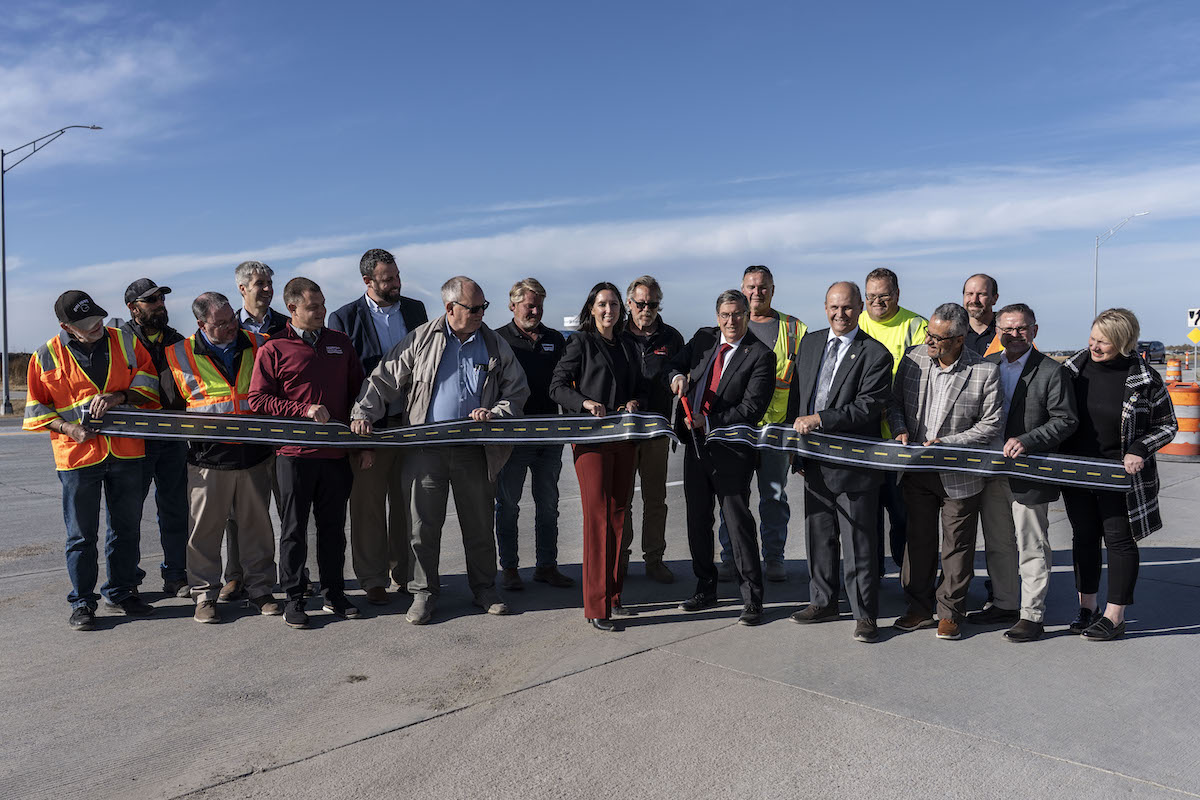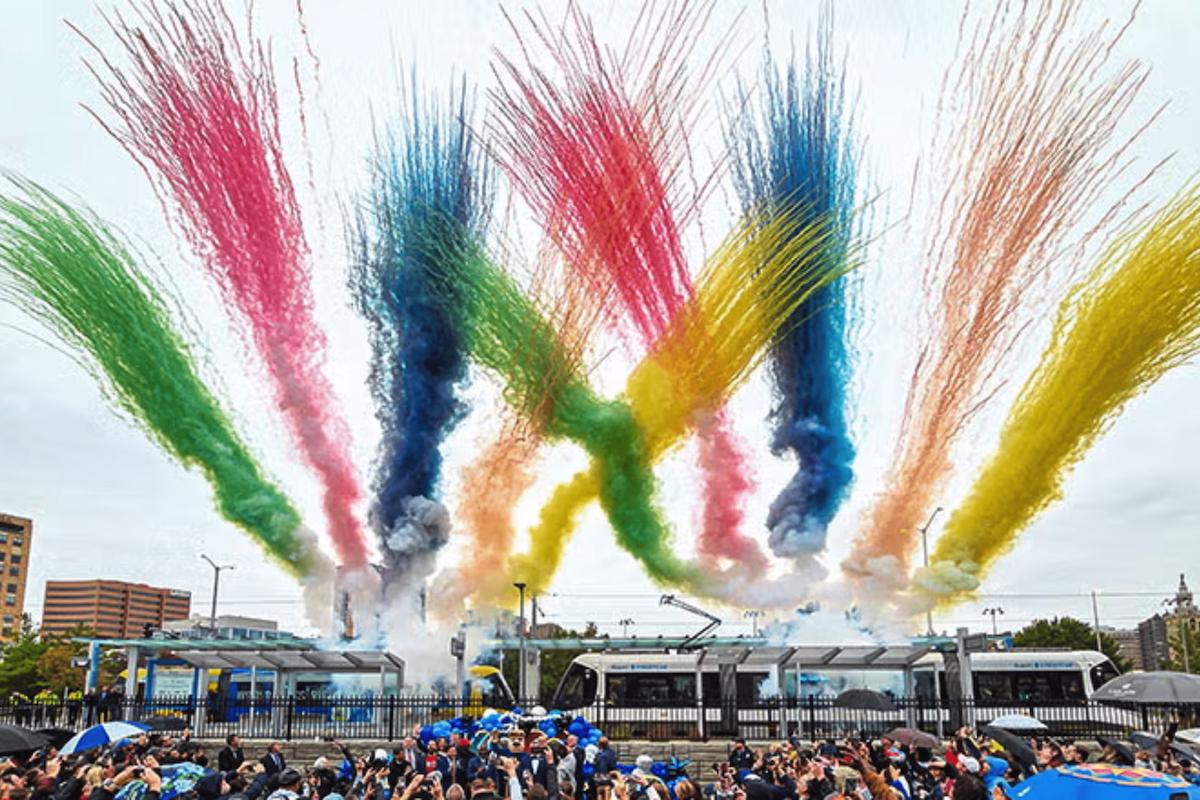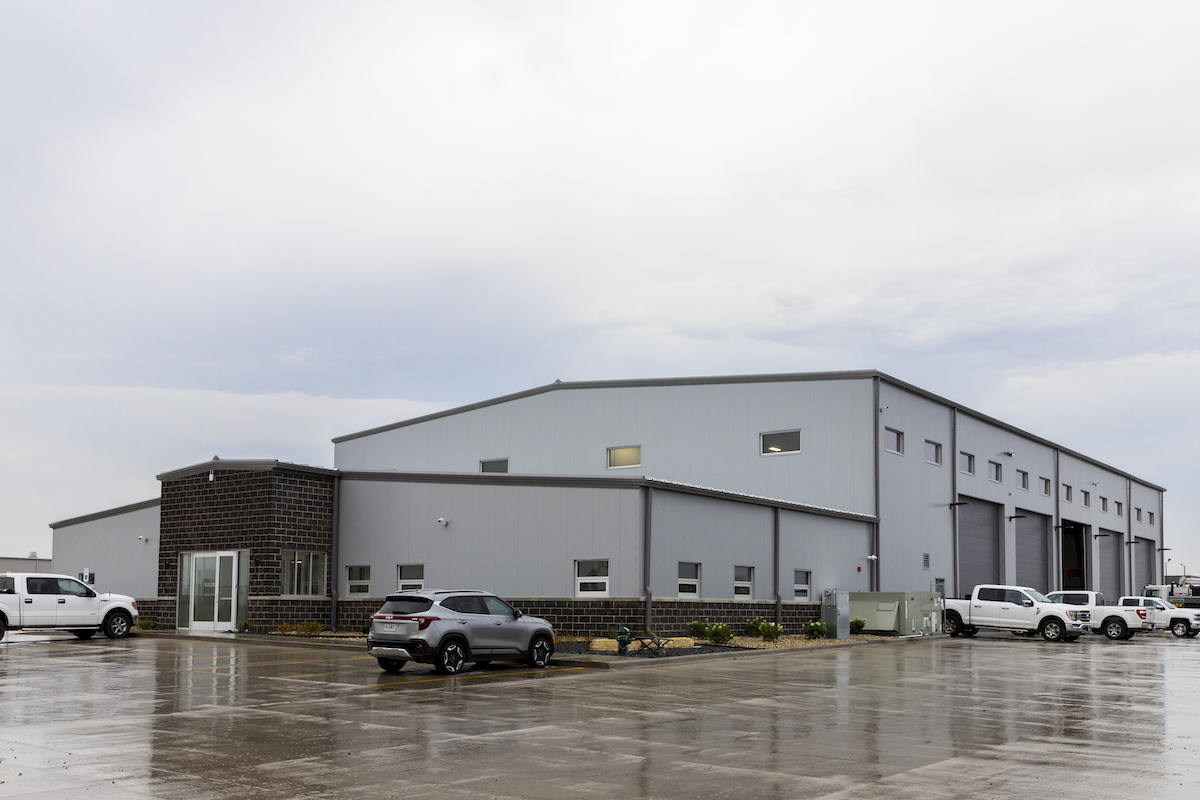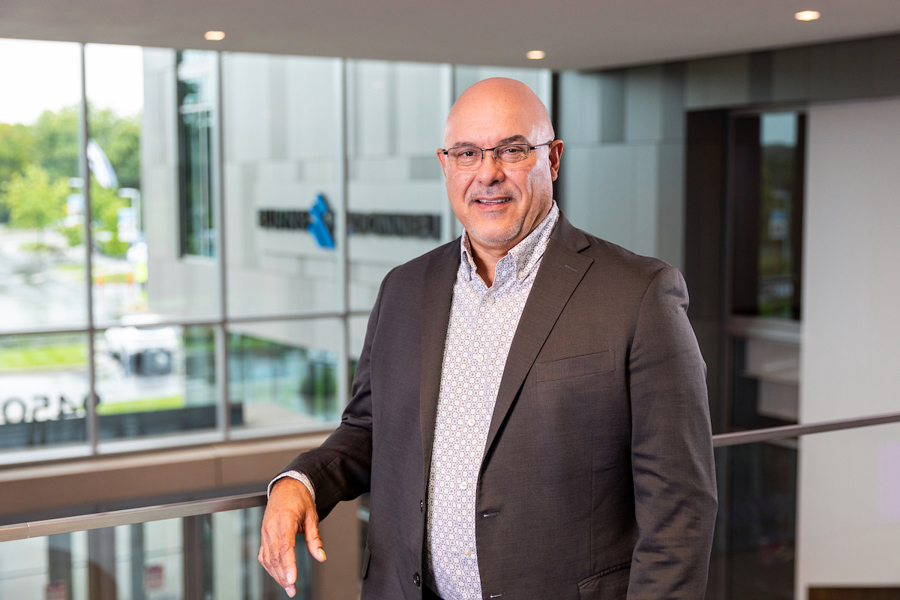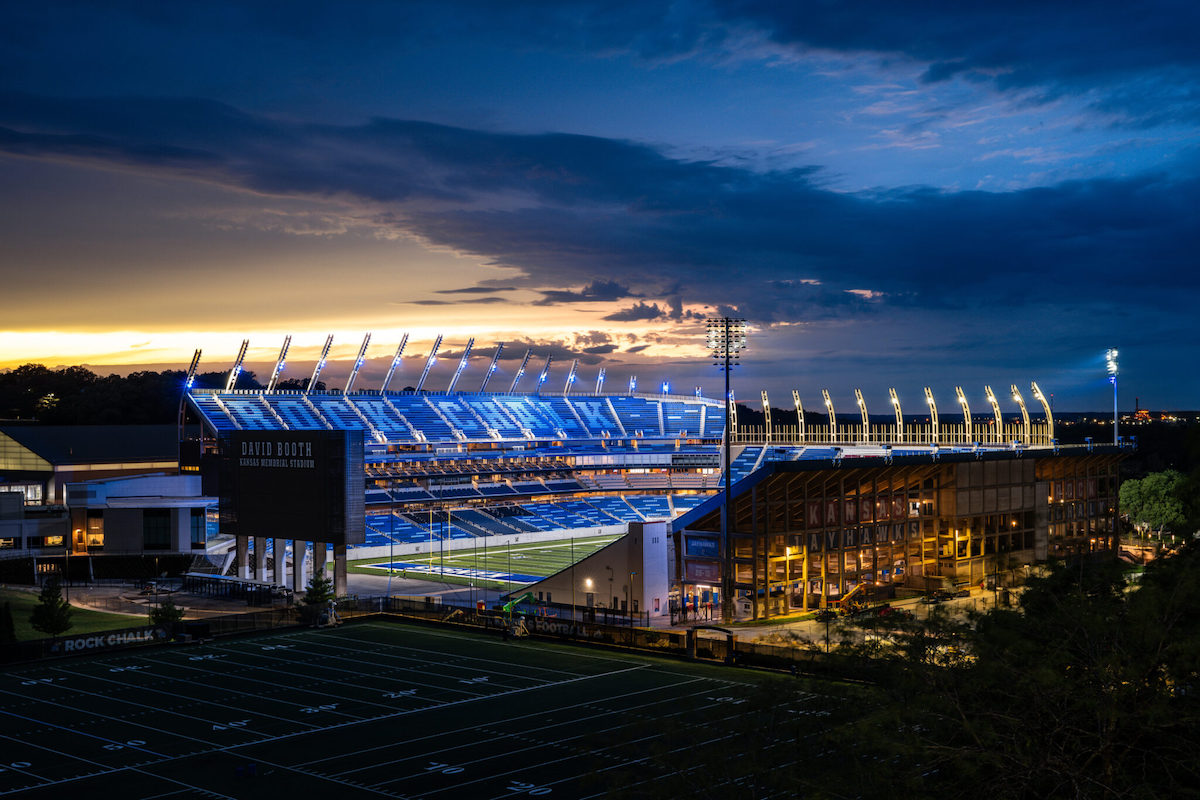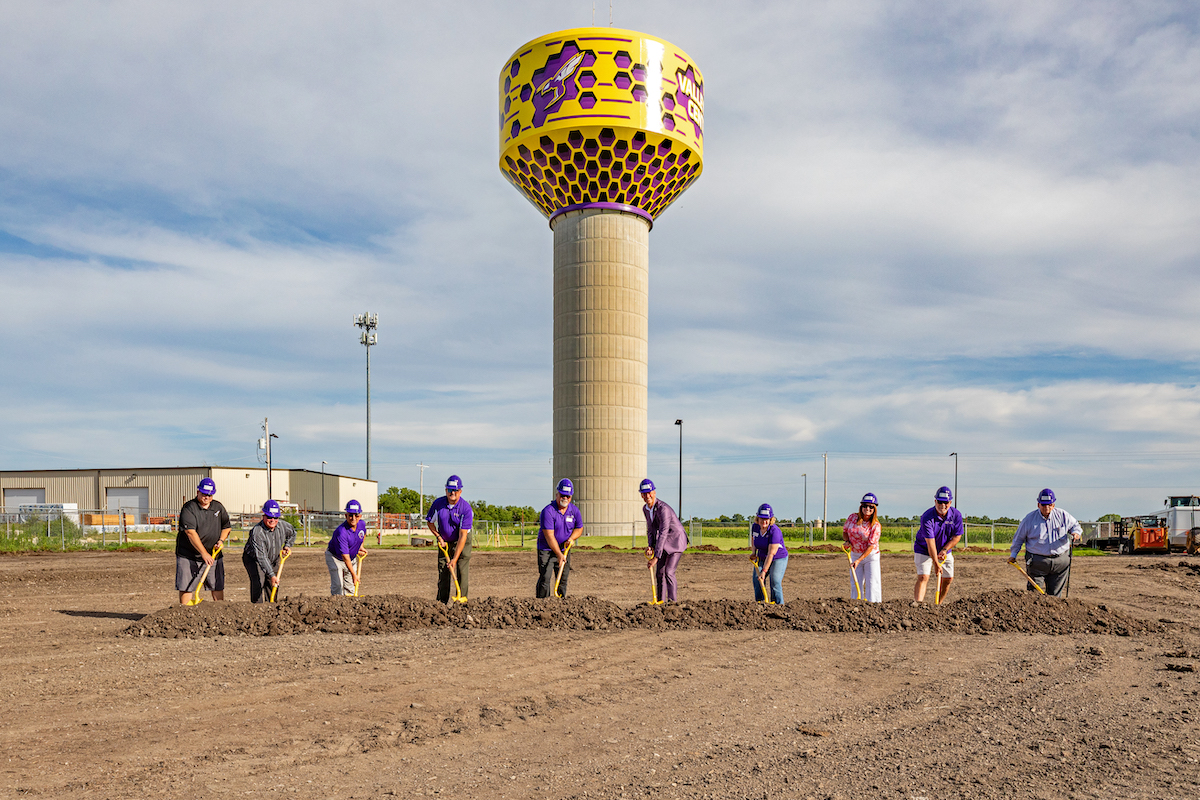“[The interchange] is outdated, and it has capacity issues,” said Rick Howland, Civil Engineer with ODOT. “We are trying to improve safety for the public.”
The project entails construction of a new flyover ramp for exiting I-35 northbound to I-44 westbound, widening I-35 both northbound and southbound, and replacing the I-35 bridges over Northeast 63rd Street.
“Due to the complexity of this job, there are multiple challenges,” said Landry Logan, Division Manager at Manhattan Road & Bridge of Tulsa, Oklahoma, the contractor working on the project. “The high traffic volume in this area is a tough one to deal with to begin with. The size of the bridges, both width and height, creates numerous constructability challenges related to formwork and the phasing of the project.”
This job serves to prepare for a future project to complete the I-35/I-44 interchange reconstruction by building a new eastbound I-44 to northbound I-35 ramp. At the completion of the future project, I-35 will have three lanes in each direction to help with capacity.

| Your local Leica Geosystems Inc dealer |
|---|
| Laser Specialist inc |
Olsson of Oklahoma City serves as the design engineer. The design firm was founded in 1956 by John E. Olsson, whose first project was a $56 rural cemetery plat. The current management aims to honor his legacy of a strong work ethic, dedication to clients’ success, and a civic commitment. The company works all over the United States and now is one of the 75 largest engineering and design firms in the United States, employing more than 2,000 people.
Manhattan Road & Bridge Company received the construction contract. The more than 50-year-old company, a part of Manhattan Construction Group, specializes in bridge and heavy infrastructure services in Oklahoma, Arkansas, and Florida for government entities, private railroads, and port and dock operators.
“We selected this project because of the magnitude of the scope of work,” Logan said. “This project consists of all different aspects of heavy highway construction, from earthwork to bridge building to concrete paving. With our resources, a project like this one that contains multiple facets of highway construction fits us well.”
“The flyover bridge is probably the most challenging part of the project,” Logan said. “The height of the substructure required intense planning and design considerations given to the formwork for the columns and caps. Piers with single columns and hammerhead style pier caps make stability a concern for falsework. The construction team worked well with Manhattan’s engineering team to develop a formwork/falsework design to complete the work safely and efficiently.”
The continuous steel girders presented another challenge with the flyover bridge.
“The girders were also curved, which adds in an entire extra level of safety concerns and increased complexity when it comes to beam erection and stabilization during the erection process,” Logan said. “Manhattan’s project management, field superintendents, crane operators, engineering team, and safety professionals all worked as a team in order to make sure the beams were erected in a safe manner.”
Manhattan paved the deck with concrete. Crews had nearly finished the flyover at the time of writing this article. The team was tying into the approaches and concrete pavement to tie into Martin Luther King Boulevard.
Crews are replacing the north- and southbound bridges over Northeast 63rd Street. The existing bridges were built in 1958. The new single-span, concrete-girder bridges will allow for higher clearances on NE 63rd Street.
“The three smaller bridges that go over 63rd Street present their own set of challenges,” Logan said. “These three bridges all had big, full-faced abutments, which required extensive formwork design and installation.”
Traffic management presents challenges on the heavily traveled interstate. Some short-term closures are allowed, and several lane shifts can be expected. Both north- and southbound, I-35 was narrowed to two lanes in each direction. I-35 had short, overnight closures when placing the beams for the flyover, with vehicles detoured to nearby roads.
“Nightly lane closures are necessary to accommodate activities such as demos, traffic switches, and beam hangs,” Logan said.
Five miles of westbound I-44 also were narrowed during construction. East- and westbound NE 63rd Street under the interstate was narrowed to one lane in each direction early in the project and closed later during the work.
Manhattan and ODOT have prioritized safety for the motoring public and the construction team while working on the project. Creating safe work environments and preventing every injury is a Manhattan core value. The department assigned someone to monitor the job 24 hours per day and to maintain traffic control. Oklahoma Highway Patrol remained on site during work hours to raise public awareness and get the vehicles to proceed more slowly through the corridor.
There were no specific environmental concerns for this project. The team made sure the fill was free from hazards. Crews mitigated dust with water from trucks and ensured no stormwater runoff reached a nearby creek to the south of the project.
Manhattan used a significant amount of equipment on the job, including multiple Manitowoc cranes, Trimble GPS-controlled machine grading, and Trimble GPS rover control for layout. Crews used a Gomaco slipform paver attachment for the Gomaco Commander III paving machine, a Gomaco GP3 with a paving width of 28 feet wide, and a Vogele laydown machine. Manhattan also used several different Gomaco moment slab/barrier molds to expedite the construction of concrete barriers, as well as HCSS Field and HCSS Safety software for daily reporting and job tracking.
Logan praised the teamwork and collaboration on the job. “Everyone within Manhattan Road and Bridge — from the preconstruction team to the grading crews to the bridge crews to the paving crews to the project management — all work together to keep the project running smoothly. There are no areas within the project that the left hand isn’t constantly communicating with the right hand in order to complete the project.”
The project is scheduled for completion in fall 2025.
“I’m proud that we’re able to improve the safety [of the bridges],” Howland said. “We’ll add capacity and offer better geometry for the driving public.”


















